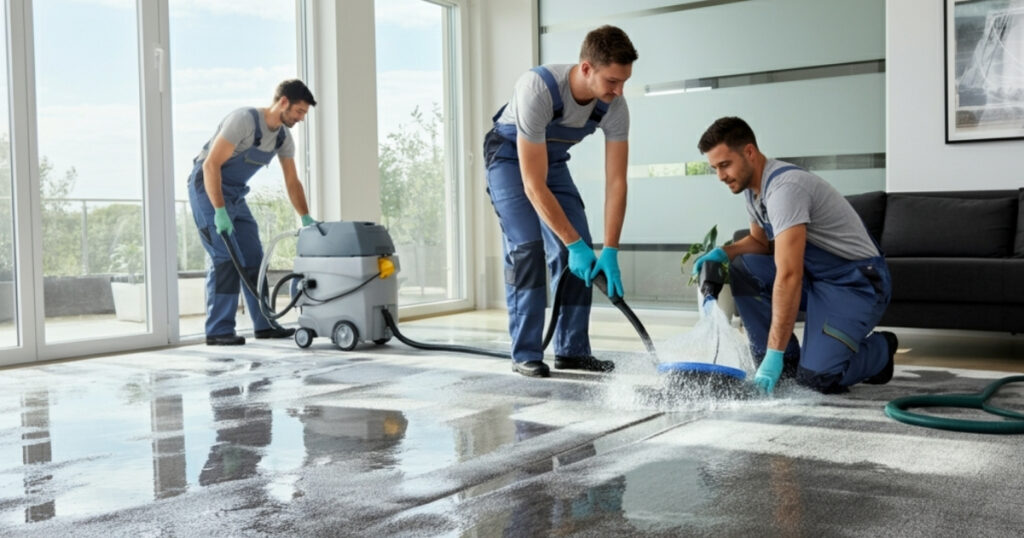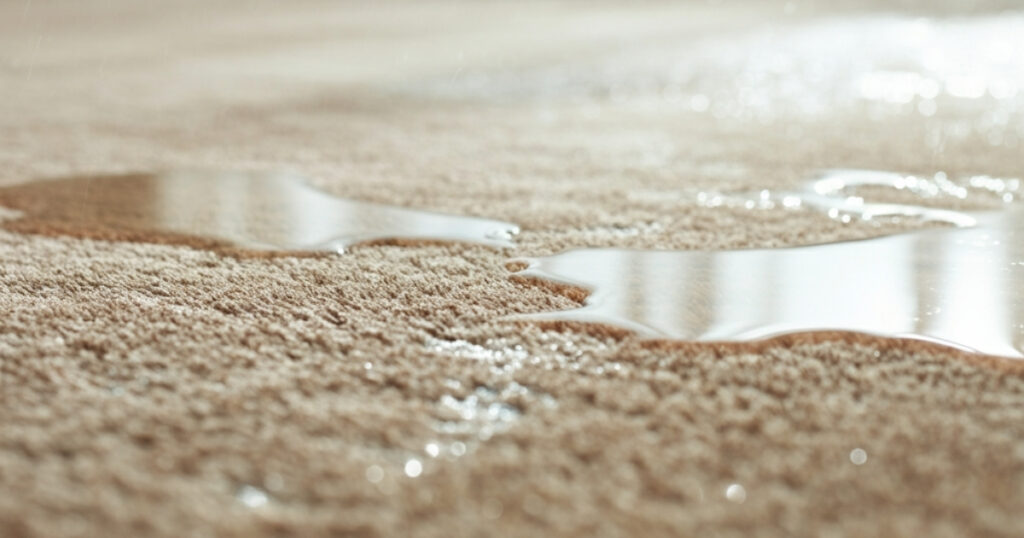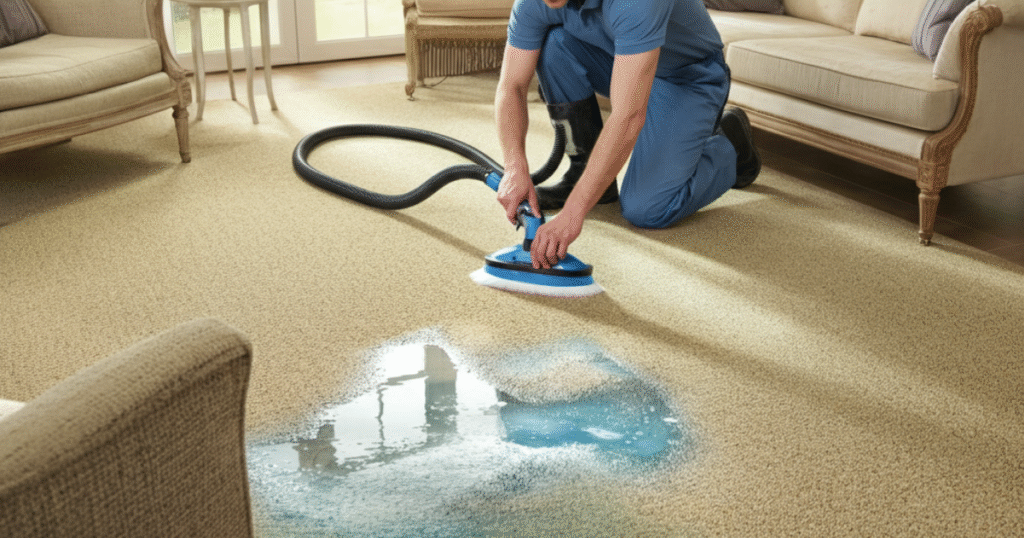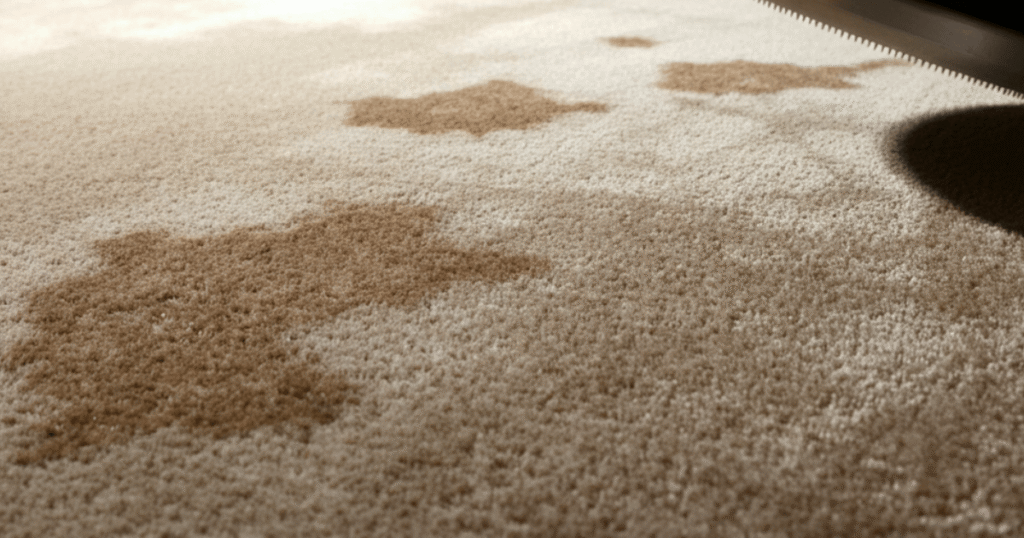Getting new floor paint can transform your space completely. However, knowing exactly how long floor paint should dry before putting furniture back is crucial for achieving professional-looking results. Floor paint typically needs 24 to 72 hours to dry sufficiently before furniture placement, though several factors affect this timeline.
Most homeowners make the mistake of rushing this process. Consequently, they end up with dented, scratched, or permanently marked floors that require costly repairs.
Understanding Floor Paint Drying Phases
Initial Surface Drying Process
Floor paint goes through two distinct phases during the drying process. First, the surface becomes touch-dry within 2-4 hours under normal conditions. Meanwhile, the paint underneath continues hardening for much longer periods.
This initial drying creates a skin on top while deeper layers remain soft. Therefore, surfaces that feel dry might still damage easily under furniture weight. Understanding this difference helps prevent premature furniture placement.
Complete Curing Timeline
Full curing represents the complete chemical bonding process. This phase can take anywhere from 7 to 30 days depending on the paint type. During this time, the floor gradually becomes more resistant to heavy furniture and daily wear.
Complete curing provides maximum durability and scratch resistance. However, furniture can typically return before full curing occurs. The key lies in knowing when surfaces become strong enough for careful furniture placement.
Different Paint Types and Drying Requirements
Water-Based Floor Paint Options
Latex floor paints generally dry faster than oil-based alternatives. Water-based formulations typically allow furniture placement after 24-48 hours. Additionally, these paints produce fewer fumes and clean up easily with water.
Modern acrylic floor paints offer excellent durability with faster drying times. These formulations often reach furniture-ready hardness within 24 hours under optimal conditions. Furthermore, they resist yellowing and maintain color stability over time.
Oil-Based Paint Considerations
Oil-based paints require 48-72 hours minimum before any heavy objects should touch the surface. These formulations penetrate deeper into floor materials and create extremely durable finishes. However, they also produce strong fumes and require longer ventilation periods.
Traditional alkyd floor paints offer superior durability for high-traffic areas. Nevertheless, they demand patience during the drying process. Rushing furniture placement on oil-based paints often results in permanent impressions or surface damage.
Specialty Coating Requirements
Epoxy floor coatings demand even more patience than standard paints. These industrial-strength options need 72 hours to one week before furniture replacement. Additionally, they offer superior durability once fully cured.
Polyurethane floor finishes also require extended drying times. These protective coatings typically need 48-72 hours before light furniture placement. However, they provide exceptional resistance to scratches and moisture damage.
Environmental Factors Affecting Drying Time
Temperature Impact on Paint Drying
Room temperature significantly influences how long floor paint should dry before putting furniture back. Optimal conditions range between 65-75°F with consistent temperatures throughout the drying period. Higher temperatures accelerate drying, while lower temperatures slow the process considerably.
Cold temperatures below 50°F can double or triple normal drying times. Paint molecules move slower in cold conditions, preventing proper film formation. Therefore, winter painting projects often require extended furniture displacement periods.
Humidity Effects on Paint Curing
Humidity levels dramatically affect paint drying speed and quality. Low humidity below 50% creates ideal conditions for moisture evaporation from paint films. Conversely, high humidity above 70% prevents proper drying and extends furniture placement timelines.
Excessive moisture in the air competes with paint solvents for evaporation. This situation creates soft, tacky surfaces that remain vulnerable to furniture damage. Moreover, humid conditions can cause paint to remain sticky for days beyond normal drying times.
Ventilation and Air Movement
Proper airflow helps remove moisture from freshly painted floors effectively. Opening windows and running fans creates the ideal environment for faster drying. Moreover, good ventilation prevents paint fumes from building up in enclosed spaces.
Stagnant air pockets allow moisture to linger around the paint surface. This situation extends drying time and increases the risk of uneven curing patterns across your floor. Strategic fan placement promotes consistent drying throughout the painted area.
Application Variables That Affect Drying
Paint Layer Thickness Considerations
Thicker paint layers naturally take longer to dry completely. Multiple thin coats typically dry faster and provide better results than single thick applications. Furthermore, thin applications create more uniform surfaces with consistent drying patterns.
Heavy paint application traps solvents beneath the surface film. These trapped solvents take longer to evaporate, extending the time before furniture can safely return. Therefore, proper application technique directly impacts furniture placement timing.
Surface Preparation Impact
Well-prepared surfaces allow better paint adhesion and more predictable drying times. Clean, smooth surfaces promote even paint flow and consistent thickness. Additionally, proper preparation prevents absorption issues that can affect drying speed.
Porous surfaces absorb paint solvents at different rates, creating uneven drying patterns. Sealing porous floors before painting creates more consistent drying conditions. This preparation step helps ensure uniform readiness for furniture placement.
Testing Methods for Paint Readiness
Performing the Touch Test
Before moving furniture back, perform a gentle touch test in an inconspicuous area. The surface should feel completely dry without any tackiness. Press your fingertip lightly for 5-10 seconds to check for impressions or sticking.
If the paint feels slightly soft or leaves fingerprint marks, wait another 12-24 hours before testing again. This simple evaluation prevents costly damage from premature furniture placement. Always test multiple areas since drying can vary across different floor sections.
Advanced Readiness Assessment
Beyond basic touch tests, examine the paint surface under different lighting angles. Properly dried paint appears uniform without glossy wet spots or dull soft areas. Additionally, check for consistent color depth across the entire painted surface.
Temperature variations can create uneven drying patterns within the same room. Test areas near windows, doors, and heating vents separately since these locations often dry at different rates. This thorough approach ensures complete readiness before furniture returns.
Strategic Furniture Placement Approaches
Gradual Furniture Return Method
Start with lighter items first to test the floor’s readiness for heavier pieces. This gradual approach helps identify any soft spots before placing expensive or heavy furniture. Additionally, light items cause less damage if the surface isn’t completely ready.
Begin with items like chairs, small tables, or decorative pieces that distribute weight over multiple contact points. Monitor these test items for several hours before progressing to heavier furniture. This systematic method minimizes risk while determining surface readiness.
Weight Distribution Techniques
Place plywood sheets or hardboard under extremely heavy furniture legs during the first week. This technique spreads the load across a larger surface area, reducing concentrated pressure points. Similarly, use multiple contact points rather than narrow legs or casters.
Furniture pads and protective materials become essential during initial placement. These accessories distribute weight evenly while protecting against scratches during minor movements. Moreover, they make future furniture rearrangement much easier once paint fully cures.
Professional Moving Strategies
Plan furniture placement during optimal weather conditions when possible. Low humidity days with moderate temperatures provide the best environment for paint stability. Additionally, avoid moving furniture during the first 48 hours regardless of paint type.
Schedule heavy furniture moves for after the minimum recommended drying time. Clean furniture legs thoroughly to remove any dirt or debris that could scratch delicate paint surfaces. Small particles can create permanent damage on paint that hasn’t fully hardened.
Protective Measures During Initial Weeks
Selecting Appropriate Furniture Protectors
Apply felt pads or furniture protectors to all contact points before placement. These inexpensive accessories prevent scratching during future movements and distribute weight more evenly. Choose breathable materials that won’t stick to uncured paint surfaces.
Avoid rubber-backed protectors during the first month after painting since they can bond with uncured paint films. Plastic glides or felt pads work better for protecting freshly painted surfaces. Furthermore, these materials allow slight furniture adjustments without surface damage.
Creating Buffer Zones
Use area rugs in high-traffic zones to protect painted surfaces during the full curing period. These protective coverings prevent concentrated wear patterns while paint reaches maximum hardness. Additionally, rugs add comfort and style to newly painted spaces.
Strategic rug placement also guides foot traffic away from vulnerable areas during the initial curing period. This approach maintains painted surface integrity while allowing normal room use. Moreover, removable rugs make cleaning and maintenance easier.
Common Timing Mistakes to Avoid
Underestimating Environmental Conditions
Many homeowners fail to account for seasonal changes in temperature and moisture levels. Painting during humid or cold weather significantly extends drying times beyond normal expectations. Subsequently, they move furniture too early and damage their newly painted floors.
Monitor weather forecasts and indoor conditions throughout the drying period carefully. Seasonal heating and cooling systems affect indoor humidity and temperature stability. Therefore, adjust furniture placement timelines based on actual environmental conditions rather than general guidelines.
Ignoring Paint Manufacturer Guidelines
Different paint brands have varying formulations that affect drying characteristics. Always consult manufacturer instructions for specific drying times and furniture placement recommendations. These guidelines account for unique chemical properties in each product.
Generic timing advice may not apply to specialty paints or unique formulations. Premium paints often have different drying characteristics than standard options. Therefore, following manufacturer specifications ensures optimal results and prevents warranty issues.
Rushing High-Value Furniture Placement
Expensive or antique furniture deserves extra caution during placement on newly painted floors. These irreplaceable items can suffer permanent damage from premature contact with soft paint surfaces. Therefore, wait additional time beyond minimum recommendations for valuable pieces.
Consider professional moving services for extremely heavy or valuable furniture pieces. These specialists understand proper techniques for protecting both furniture and painted surfaces. Moreover, they carry insurance coverage for potential damage during moves. Read more about How Long Before You Can Put Furniture on Refinished Floors?
Long-term Floor Care Strategies
Maintenance During Curing Period
Even after furniture placement, newly painted floors remain somewhat vulnerable for several weeks. Regular cleaning with appropriate products helps maintain paint appearance and durability. However, avoid harsh chemicals or abrasive tools during the first month.
Gentle cleaning methods protect paint films during the complete curing process. Use damp mops with mild detergents rather than aggressive scrubbing tools. Additionally, promptly clean spills to prevent staining or surface damage during vulnerable periods.
Establishing Protective Routines
Develop habits that protect painted floors throughout their lifespan. Regular furniture pad maintenance ensures continued protection against scratches and dents. Furthermore, periodic deep cleaning maintains surface appearance and extends paint life.
Monitor high-traffic areas for early signs of wear or damage. Addressing minor issues promptly prevents major repairs later. This proactive approach maintains floor appearance while maximizing paint durability and longevity. Read more about: What Color Furniture Goes Best With Dark Wood Floors?
Frequently Asked Questions
1. Can I walk on floor paint after 24 hours?
Yes, most floor paints allow light foot traffic after 24 hours. However, wear socks or soft-soled shoes to prevent damage.
2. What happens if I put furniture back too early?
Placing furniture too early can cause permanent impressions, scratches, or paint removal requiring costly repairs.
3. Does cold weather affect drying time?
Yes, temperatures below 60°F significantly extend drying time and may require double the normal waiting period.
4. Can fans help speed up drying?
Yes, fans improve ventilation and reduce humidity, but avoid directing airflow directly onto wet paint surfaces.
5. Are water-based paints ready for furniture sooner?
Yes, water-based paints typically allow furniture placement after 24-48 hours versus 48-72 hours for oil-based options.
6. Should I use furniture pads immediately?
Yes, furniture pads distribute weight evenly and prevent scratches, but choose felt or plastic over rubber-backed options.
7. How long until paint reaches full strength?
Complete curing takes 7-30 days depending on paint type, though furniture can return much sooner with precautions.
8. What if humidity is high during drying?
High humidity extends drying time significantly, sometimes doubling normal timelines for safe furniture placement.
Getting Your Timing Right for Perfect Results
Understanding how long floor paint should dry before putting furniture back ensures professional-looking results that last for years. The key lies in patience, proper preparation, and attention to environmental conditions. While waiting the full recommended time might seem inconvenient, this approach prevents costly repairs and maintains your floor’s appearance.
Remember that proper drying time varies based on paint type, environmental conditions, and application thickness. Always test small areas before moving heavy furniture, and consider using protective measures during the first weeks after painting. Following these guidelines will help you achieve beautiful, durable floors that withstand daily use while maintaining their fresh appearance for years to come.
As an Amazon Associate, I earn from qualifying purchases.




